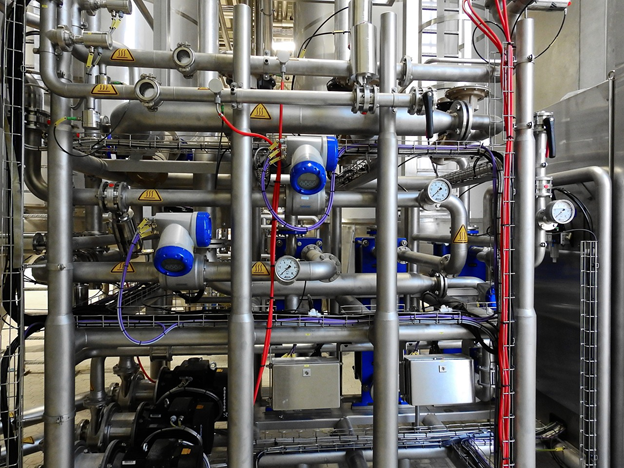Stainless steel tubing has long been a preferred material in various industrial applications due to its durability, strength, and corrosion resistance. However, beyond these well-known attributes, stainless steel tubing also offers significant environmental benefits that make it an ideal choice for sustainable industrial practices. This blog explores the environmental advantages of using stainless steel tubing, emphasizing its role in promoting eco-friendly industrial applications.
Understanding Stainless Steel Tubing
Stainless steel tubing is manufactured from an alloy of iron, chromium, nickel, and other metals. The presence of chromium gives stainless steel its unique ability to resist corrosion and oxidation, making it suitable for harsh industrial environments. This tubing comes in various forms, including welded and seamless tubes, and is used in applications ranging from chemical processing to food and beverage manufacturing.
Types of Stainless Steel Tubing
- Welded Tubing: Made by rolling a flat strip of steel into a tube and welding the seam.
- Seamless Tubing: Produced by extruding a solid billet of steel into a hollow tube without a seam, offering superior strength and pressure resistance.
Common Grades
- 304 Stainless Steel: Known for its excellent corrosion resistance and good formability.
- 316 Stainless Steel: Contains molybdenum, which enhances its resistance to pitting and crevice corrosion, especially in chloride environments.
Environmental Benefits of Stainless Steel Tubing
1. Recyclability
One of the most significant environmental benefits of stainless steel tubing is its recyclability. Stainless steel is 100% recyclable, meaning it can be melted down and reused without any loss of quality. This recyclability reduces the demand for virgin raw materials and minimizes the environmental impact associated with mining and refining.
Benefits of Recyclability:
- Resource Conservation: Reduces the need for extracting raw materials.
- Energy Savings: Recycling stainless steel requires less energy than producing new stainless steel from raw materials.
- Waste Reduction: Diverts stainless steel scrap from landfills, reducing waste and promoting circular economy practices.
2. Durability and Longevity
Stainless steel tubing is known for its long lifespan, which significantly contributes to its environmental benefits. The durability of stainless steel means that it does not need to be replaced as frequently as other materials, reducing the overall consumption of resources over time.
Benefits of Durability:
- Reduced Resource Use: Fewer replacements mean less demand for new materials.
- Lower Maintenance: Stainless steel requires minimal maintenance, which reduces the environmental impact of repair activities.
- Extended Lifecycle: Long-lasting materials contribute to the sustainability of industrial systems.
3. Corrosion Resistance
The corrosion resistance of stainless steel tubing eliminates the need for protective coatings and treatments that can have harmful environmental effects. Many protective coatings contain volatile organic compounds (VOCs) and other hazardous substances that can leach into the environment.
Benefits of Corrosion Resistance:
- Reduced Chemical Use: No need for environmentally harmful coatings or treatments.
- Lower Pollution Risk: Reduces the risk of pollutants entering the environment through coating degradation.
- Clean Processes: Ensures that processes remain free from contamination, which is crucial in industries like food and beverage production.
4. Energy Efficiency in Production
Modern stainless steel production techniques have become increasingly energy-efficient, further enhancing the environmental credentials of stainless steel tubing. Advances in technology and manufacturing processes have reduced the energy consumption and greenhouse gas emissions associated with producing stainless steel.
Benefits of Energy Efficiency:
- Lower Carbon Footprint: Reduces the overall carbon footprint of industrial operations.
- Sustainable Manufacturing: Promotes sustainable manufacturing practices in the steel industry.
- Reduced Emissions: Minimizes greenhouse gas emissions, contributing to global efforts to combat climate change.
5. Hygienic Properties
Stainless steel’s non-porous surface and resistance to bacterial growth make it an excellent choice for industries where hygiene is paramount, such as food processing and pharmaceuticals. This property reduces the need for harsh cleaning chemicals and promotes a cleaner environment.
Benefits of Hygienic Properties:
- Reduced Chemical Use: Minimizes the need for aggressive cleaning agents that can harm the environment.
- Improved Product Safety: Ensures that products remain free from contamination, supporting public health.
- Sustainable Practices: Encourages the adoption of sustainable cleaning practices in sensitive industries.
6. Reduced Environmental Impact of Transportation
The strength-to-weight ratio of stainless steel tubing means that less material is needed to achieve the desired performance characteristics. This reduction in material use translates to lighter loads and lower transportation costs, reducing the environmental impact of shipping and handling.
Benefits of Reduced Transportation Impact:
- Lower Fuel Consumption: Lighter loads reduce fuel consumption during transportation.
- Reduced Emissions: Fewer emissions from transportation vehicles contribute to cleaner air.
- Efficient Logistics: Promotes more efficient logistics and supply chain practices.
Applications of Stainless Steel Tubing in Sustainable Industries
1. Food and Beverage Industry
Stainless steel tubing is widely used in the food and beverage industry for processing, transporting, and storing food products. Its hygienic properties, corrosion resistance, and durability make it an ideal choice for ensuring food safety and quality while minimizing environmental impact.
2. Chemical Processing
In the chemical processing industry, stainless steel tubing is used to transport aggressive chemicals and high-pressure fluids. The corrosion resistance and durability of stainless steel ensure safe and efficient operations while reducing the risk of environmental contamination.
3. Water Treatment
Stainless steel tubing plays a crucial role in water treatment plants, where it is used to transport water and chemicals safely. Its resistance to corrosion and ability to withstand harsh conditions make it a reliable material for ensuring clean and safe water supplies.
4. Pharmaceutical Industry
The pharmaceutical industry relies on stainless steel tubing for the production and transport of medicines. The material’s hygienic properties and resistance to corrosion ensure that pharmaceutical products remain uncontaminated and safe for use.
5. Renewable Energy
Stainless steel tubing is increasingly used in renewable energy applications, such as solar and wind power systems. Its durability and resistance to environmental factors make it a sustainable choice for constructing and maintaining renewable energy infrastructure.
Conclusion
Stainless steel tubing offers numerous environmental benefits that make it an excellent choice for industrial applications. Its recyclability, durability, corrosion resistance, and energy efficiency contribute to sustainable practices and reduce the overall environmental impact of industrial operations. By choosing stainless steel tubing, industries can enhance their sustainability efforts, promote resource conservation, and support a cleaner and healthier environment.
Whether you are involved in food processing, chemical manufacturing, water treatment, or renewable energy, stainless steel tubing provides a reliable and eco-friendly solution. The use of high-quality materials, such as a 35mm stainless steel pipe, can further enhance the performance and sustainability of your industrial applications. Embracing the environmental benefits of stainless steel tubing is a significant step towards achieving long-term sustainability goals and reducing the ecological footprint of industrial activities.




